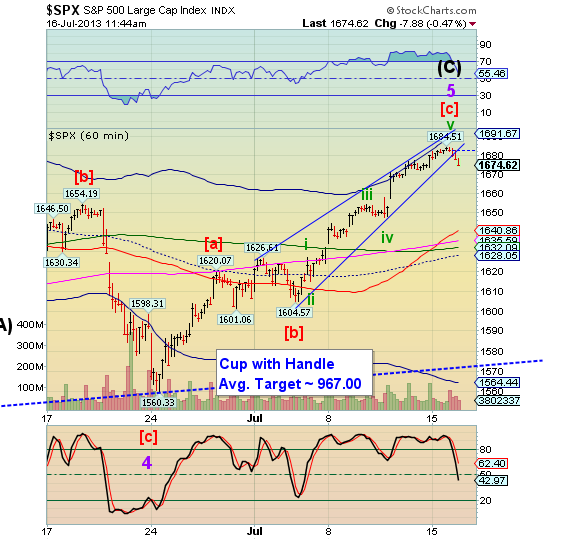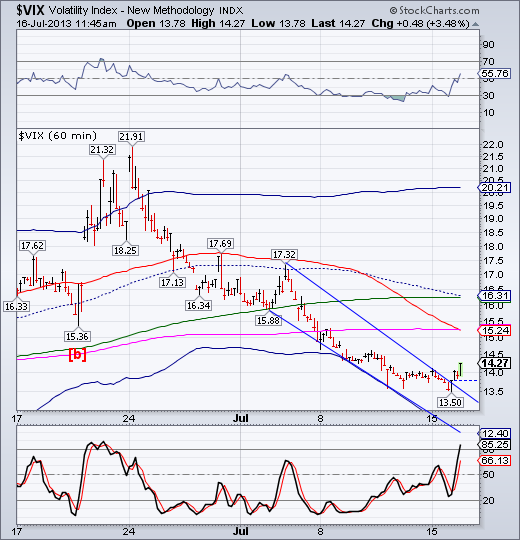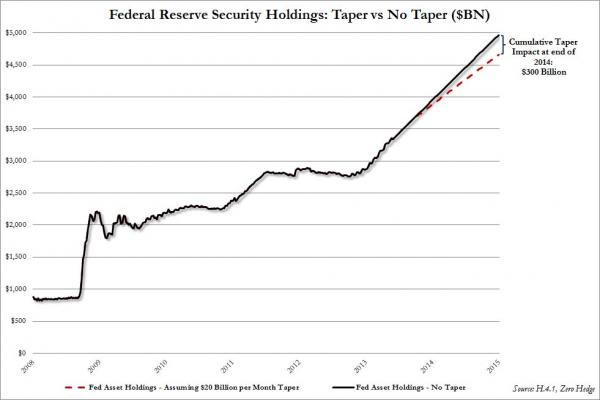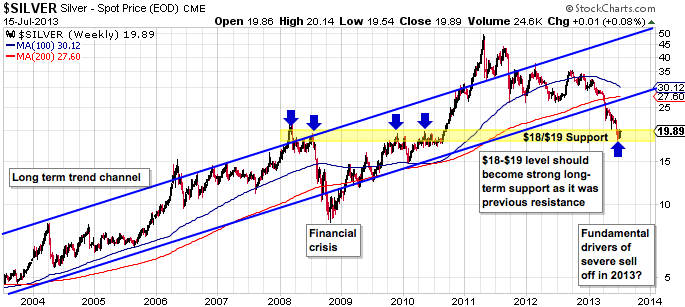by Pater Tenebrarum
Political Risk Threatens to Reignite Crisis in Europe
It couldn't come at a more inopportune moment: the crisis that is increasingly engulfing Mariano Rajoy, and the mounting legal troubles besetting Silvio Berlusconi, the realization that Portugal's crisis remains intractable and Greece careening toward another summer of discontent (even as the tourism industry is recovering slightly), as civil servants and their unions gear up to fight the latest troika-imposed cuts. The moment is so inopportune because Olli Rehn and others have to once again fear for their summer vacation. Euro area crises have an odd habit of flaring up in the middle of the summer.
Rajoy's troubles, as some speculate, may actually be the result of a kind of palace coup: apparently there are factions within the PP that want to be caliph instead of the caliph. No-one ever doubted that Spain's politics were riddled with corruption, so the main question should actually be: 'why is it all coming to light all of a sudden'? After all, if former PP treasurer Louis Barcenas is to be believed, the particular scams he and his buddies were engaged in went on for 20 years running. Former prime minister Jose Maria Aznar has been mentioned as a possible culprit, but he too is on the 'Barcenas list' of receivers. Others suspect that the Most Excellent Countess of Bornos, Esperanza Aguirre y Gil de Biedma, the former president of Madrid, may have a hand in the proceedings, since she isn't implicated and is loudly calling for a clean-up of the party.

Somewhere in the PP, there is an Iznogoud lying in wait.
(Tabary, Goscinny)

Interestingly, Rajoy seems to be on a mission to remain right where he is, regardless of what new information comes to light (the latest being his text messages of support to the jailed Barcenas). The FT reports:
“Mariano Rajoy was battling on Monday to contain the political fallout from the slush fund scandal that has rocked his party, dismissing calls for him to step down and warning of the risks of plunging Spain and its long-suffering economy into “political instability”.
“I will defend political stability and I will complete the mandate given to me by the Spanish people,” the Spanish prime minister said.
His comments came amid growing concern over the political and economic impact of the scandal, which revolves around allegations that the ruling Popular party operated a slush fund from which it made undeclared cash payments to senior party leaders.
The affair has sapped the government of political capital and popular support at a time when Madrid is locked in a desperate struggle to lift the country out of recession and tackle Spain’s unemployment crisis. European leaders and foreign investors have long regarded Spain’s political stability as a key asset – and one that has set Madrid apart from other crisis-hit countries in southern Europe, such as neighboring Portugal.
Polls show the scandal has already inflicted severe damage on the standing of both the PP and Mr Rajoy personally, with fewer than a quarter of voters saying they would vote for the ruling party if elections were held now.
Mr Rajoy was speaking just hours after the man at the center of the scandal launched a fresh legal broadside against the prime minister and other senior PP officials. Luis Bárcenas, the former party treasurer, told a criminal court in Madrid that he indeed managed a slush fund that was fed by secret donations from construction companies and other businesses.
According to several accounts of the closed-door hearing, he also confirmed allegations that the fund was used to make quarterly cash payments to top party functionaries, including to Mr Rajoy himself. In a new revelation, Mr Bárcenas said he made additional cash payments worth €20,000-€25,000 to Mr Rajoy and to Dolores de Cospedal, the party leader, between 2008 and 2011.”
(emphasis added)
It doesn't sound as though that 'key asset' of political stability is still worth much in Spain, but for now Rajoy and his supporters have decided to attempt to undermine Barcenas' version of events by implying that he is just trying to divert attention from the €48 million he managed to spirit away for himself.

Spain's 10 year government bond yield – no big moves yet, but it remains at some distance from recent lows – click to enlarge.
 The IBEX index in Madrid, weekly – click to enlarge.
The IBEX index in Madrid, weekly – click to enlarge.
Cavaliere in Dire Straits
That Berlusconi's past is now catching up with him is fairly easy to explain: the eurocratic elites want to get rid of this embarrassing maverick. He's not with the program, no fan of Monti's austerity policies and on record for stating that Italy should rather opt for leaving the euro than becoming an economic vegetable under the diktats of Brussels. The peculiarities of Italy's penal code ensure that Berlusconi will never see a prison from inside, but if he gets convicted again, it will almost certainly finish his political career. Ironically, he is driven to keep going as a politician precisely because he can most effectively fight against the courts from a position of political power.
However, if his final appeal in a tax fraud case on July 30 ends with a conviction, he will be banned from public office for five years – his political career will be over. Not only that, his party will lose its main attraction. It is interesting how this case has progressed. The latest developments suggest that the outcome is almost preordained:
“Lawmakers from the People of Liberty party, known as the P.D.L., asked for time for consultation, the day after Italy’s highest court scheduled a hearing on July 30 for Mr. Berlusconi’s final appeal in a tax fraud case. This date came months earlier than expected. The decision by the court, motivated by the need to prevent the statute of limitations from expiring on one of the charges facing the former prime minister, caused a political uproar.
A definitive conviction would result in a five-year ban from public office for Mr. Berlusconi. If the high court’s decision is upheld by the Court of Cassation and by Parliament, it would likely result in a political earthquake for the left-right coalition.”
(emphasis added)
Meanwhile, a burgeoning scandal over the deportation of the family of a Kasakh dissident threatens to sink Berlusoni's top political aide and his man in Italy's cabinet, interior minister Angelino Alfano.
 Italy, 10 year government bond yield – click to enlarge.
Italy, 10 year government bond yield – click to enlarge.
 The MIB Index in Milan, weekly – click to enlarge.
The MIB Index in Milan, weekly – click to enlarge.
Political Risk Likely to Crystallize Somewhere
As Nordea points out in a summary of the growing political risks in the euro-land periphery, it would almost be a miracle if all the bullets were dodged. In brief:
Greece's government is hanging by a thread. The now smaller coalition (minus the Democratic Left, which has taken 14 MPs with it), has a slim majority of just five seats in parliament. It won't take much to bring it down, and the government may not be able to push through the 'troika's' demands without breaking apart (note in this context that junior partner PASOK is strongly intertwined with the public sector).
In Portugal it is not certain that the socialist opposition will yield to the president's demand of a 'national salvation agreement' with the tottering government – it is after all leading in the polls at the moment.
As to Italy and Spain, see above – it should also be mentioned though that Italy has just been downgraded again, along with France. The recent Fitch downgrade of France, which is a major guarantor of the EU's bailout vehicles, has incidentally also led to a downgrade of the EFSF.
John Dizard writes in the FT that the new rules that allow rating agencies to only issue ratings on European sovereigns at set time intervals could lead to unintended consequences (surprise!):
“European authorities, even more than their US counterparts, have taken note of the shortcomings of rating agencies, which now must allow at least six months between changes in the ratings of EU sovereign issuers. The US regulators are still chafing at the restrictions imposed on them by the First Amendment’s “freedom of speech”. And yet . . . isn’t it possible there could be unintended consequences of these changes? Consequences that could lead the hated speculator class to make outsized, socially useless, profits?
For example, when S&P downgraded the Italian sovereign to triple-B last week, it suggested that the next change, obviously at least six months from now, could be for more than one notch. After all, by next February it may appear to be the case that Italian political, economic, and financial risk is accelerating at a rapid rate. If so, the agency could be in the position of being forced to rate Italy as an investment-grade credit long after Beppe Grillo or his successors and allies had followed through on their threat to turn it into a junk issuer.
The tightening in collateral requirements by regulators and institutional risk managers could have even more serious effects. Take a look at the Bank for International Settlements’ May 2013 Paper No. 49 on “Asset encumbrance, financial reform, and the demand for collateral assets”.
You really must read the entire document, perhaps at the beach. It goes into interesting details such as “the cliff effect”, which is not a good thing, and “procyclical liquidity management practices”, which means that crashes get bigger as financial institutions demand more and better security from their counterparties.”
(emphasis added)
Dizard suggests that one way of making a bit of 'socially useless profit' out of this situation would be to go long German Bunds before Italy's rating is dropped to junk. After all, in that case there will likely be a scramble to get hold of the above mentioned 'better security' provided by collateral issued by Germany, i.e., the recently favored carry trades would likely go into reverse in a hurry.
 Germany, 10 year Bund yield – click to enlarge.
Germany, 10 year Bund yield – click to enlarge.
Nordea also mentions in passing that neither the Cyprus crisis, nor the still simmering situation in Slovenia can be said to be 'over' by any stretch of the imagination (Slovenia's budget deficit is set to double after the bank bailout. Note that since the banks belong to the government, it is essentially bailing out itself).
The Luxembourg snap election due to JC Juncker resigning over a spying scandal is probably not so important (it is interesting that in Luxembourg, the prime minister has to resign over a spying scandal, while elsewhere much greater spying scandals seem to be taken in stride by the ruling class). How important the steep slide in president Hollande's popularity is remains to be seen.
It is a good bet that Bryan Ferry didn't have Mariano Rajoy, Pedro Passos Coelho, Silvvio Berlusconi and Antonis Samaras in mind when he wrote the following words, but they are oddly appropriate to the situation (the people 'counting sheep' would be the bond traders buying periphery bonds at present in the hope that the fire won't reach them):
Both ends burning while you're counting sheep
Hell– who can sleep in this heat this night?
Tell me will I ever learn?
It's too late, the rush is on
Both ends burning and I can't control
The fires raging in my soul tonight
Oh will it never end?
Put your foot around the bend
Drive me crazy to an early grave
Tell me what is there to save tonight
Both ends burning
Burning
Burn
Keep on burning till the end, until the end
Keep on burning till the end, the very end”
(from Roxy Music's 'Both Ends Burning')
Conclusion:
The summer of 2013 may become more interesting than was hitherto expected.
See the original article >>





 4) The supply and demand fundamentals are increasingly bullish for silver While supply has been rising marginally, demand has been picking up significantly both from the investment and industrial sides. Investment demand in bullion is at all-time highs in 2013 and has resulted in shortages and high premiums on popular mint coins. Year to date sales for the popular silver eagle coin reached 25,043,500 as of July 1st. This amount is up by 44.0% from the mid year total for last year. More significantly, the year to date sales are up by 12.3% compared to the mid year sales total for 2011, when annual sales had achieved the current record high of 39,868,500. This should only accelerate in the coming months as bargain hunters load up on sub-$20 silver. Industrial demand also appears to be picking up after dropping last year. This is being driven by a recovering global economy and resurgence of demand from the solar industry. And unlike gold, silver gets depleted in industrial applications and ends up scattered in quantities too small to justify salvaging. So while all of the gold that has ever been mined still exists for re-sale, silver stockpiles decline each year and must be replenished with new mining.
4) The supply and demand fundamentals are increasingly bullish for silver While supply has been rising marginally, demand has been picking up significantly both from the investment and industrial sides. Investment demand in bullion is at all-time highs in 2013 and has resulted in shortages and high premiums on popular mint coins. Year to date sales for the popular silver eagle coin reached 25,043,500 as of July 1st. This amount is up by 44.0% from the mid year total for last year. More significantly, the year to date sales are up by 12.3% compared to the mid year sales total for 2011, when annual sales had achieved the current record high of 39,868,500. This should only accelerate in the coming months as bargain hunters load up on sub-$20 silver. Industrial demand also appears to be picking up after dropping last year. This is being driven by a recovering global economy and resurgence of demand from the solar industry. And unlike gold, silver gets depleted in industrial applications and ends up scattered in quantities too small to justify salvaging. So while all of the gold that has ever been mined still exists for re-sale, silver stockpiles decline each year and must be replenished with new mining. 
























 Federal Reserve Chairman Ben Bernanke (Source: Bloomberg)
Federal Reserve Chairman Ben Bernanke (Source: Bloomberg)
